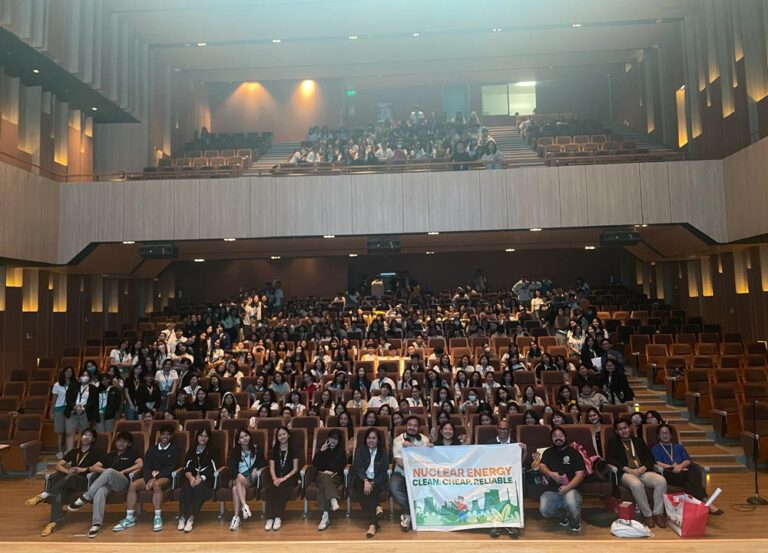The poignant story of the ‘institutionalized murder’ of Rohith Vemula (26), an erudite ‘dalit’ (‘broken people’) scholar at the Hyderabad Central University (HCU), brings into focus the impunity and lack of accountability that pervade the political system in India.
On January 3, in a New Delhi-directed political move, the upper caste-dominated HCU authorities suspended Rohith and his four colleagues — all dalits and members of the radical Ambedkar Students Association (ASA) — for unspecified misdemeanors.
The culprits were treated like criminals and subjected to ‘social boycott’ (reserved for ‘dalit’ castes in rural India). They were prevented from entering the university hostel, mess and other administrative offices or meeting the faculty. The monthly stipend payable to Rohith had already been withheld months earlier affecting his and family’s livelihood.
Rohith had been acquitted of any misdoings in an earlier clash with the right wing Akhil Bharatiya Vidyarthi Parishad (ABVP) linked to the ruling Bharatiya Janata Party (BJP). Minor political clashes between student groups are common in India and they are routinely ignored by the authorities.
The five suspended students were forced to live in a make-shift tent outside the university buildings for several days. No one from the university administration or faculty visited them to redress any grievance.
Depressed by humiliation, caste-based discrimination, unwarranted academic restrictions and loss of stipend, Rohith was forced to take his own life on Jan. 17.
Center’s role in the violence against Rohith seems clear from that the orders of suspension and other steps to humiliate the dalits involved seem to have come after the intervention of two important federal ministers from the ruling BJP, one of them in charge of labor and the other in charge of human resources development.
The labor minister, who hails from Hyderabad, presumably on the basis of HCU’s briefings, requested the human resources development minister to take action against alleged ‘casteist, extremist and anti-national activities’ in the university. The punitive proceedings against Rohith and others followed from the instructions from the federal human resources development ministry to the vice chancellor (V-C) of the university. The V-C took disciplinary steps against ASA students but spared ABVP students.
Given the serious provisions of the Scheduled Castes and Scheduled Tribes (Prevention of Atrocities) Act, 1989 as further amended in 2006, the federal ministers involved in the case could be accused of having instigated the ‘institutional murder’ of Rohith. The criminal case has all the makings of a serious challenge for the federal government affecting its credibility and accountability.
Individual and collective violence against dalits are on the rise, according to reports of the National Crime Records Bureau (NCRB). These cases are often linked with urban and rural power structures.
According to NCRB, a crime is committed against a dalit by a non-dalit every 16 minutes. At least four dalit women are raped by non-dalits every day. Thirteen dalits are murdered and six dalits are kidnapped every week. In 2012 alone, 1,574 dalit women were raped and 651 dalits were murdered.
Other offences against dalits include rape and butchery, stripping of women and parading them naked, forcing them to eat human feces, seizing of their land, social boycott, denying them access to drinking water and such tortures. All the cases that take place are not reported to the police; the reported ones are not always recorded; and the recorded ones are often minimized.
Collective violence against other minority communities such as the Scheduled Tribes, Muslims, Sikhs, Christians and ethnic communities in the Northeast has taken place often with the complicity of ruling political formations.
Briefly, in 1968, in Keezhvenmani in the state of Tamil Nadu, 44 dalits were burnt alive; in 1977, in Belchi village in the state of Bihar, 14 dalits were burnt alive; in 1978, in Marichjhapi, an island in the Sundarbans mangrove in the state of West Bengal, hundreds of dalit refugees from neighboring Bangladesh were massacred in an eviction drive; in 1984 in Karamchedu in the state of Andhra Pradesh, six dalits were murdered, three dalit women raped and many more wounded; in 1991, in Chunduru, also in Andhra Pradesh, nine dalits were slaughtered and their bodies were dumped in a canal; in 1997, in Melavalvu in Tamil Nadu, an elected dalit local council leader and five other dalits were murdered; in 2000, in Kambalapalli, in the state of Karnataka, six dalits were burnt alive; in 2002, in Jhajjar in the state of Haryana, five dalits were lynched outside a police station.
In 2006, in Khairlanji in the state of Maharashtra, villagers dragged Surekha Bhotmange, a dalit woman and her daughter and two sons out of their house; the boys were ordered to rape their mother and sister; when they refused, their genitals were mutilated and they were murdered. Surekha and her daughter were gang-raped and killed.
BR Ambedkar (1891-1956), a great freedom fighter and a dalit leader who had studied the Indian caste system in his classic study Annihilation of Caste (1936 republished by Navayana in 2014) described Hinduism as a ‘veritable chamber of horrors’.
According to Ambedkar, the hierarchical and graded Hindu caste system produced an ‘ascending scale of reverence and a descending scale of contempt’.
After independence in 1947, legal provisions and procedures were laid down for the protection, education and development of the Scheduled Castes, Scheduled Tribes and Other Backward Classes. However, even the limited policies and programs for the welfare of these people have not been effectively implemented.
Structural interaction between the rural and urban power structure and the bureaucracy at all levels has prevented effective delivery of social justice laws and regulations.
The influence of the ideas of Ambedkar has gone far beyond the dalits. They are fast spreading among students and others across caste, class, gender, region and other divides. They are taking increasingly assertive forms.
An autonomous, intelligent and assertive dalit is often seen as an aberration by mainstream Hindus. In many areas, assertive dalits are violated, mutilated and killed. Although criminal cases are registered, the culprits often manage to escape punishment because of political contacts.
In universities, dalits like Rohith are often forced to self-immolate if they refuse to meet the Hindu merit standards.
Mobile, middle-class Dalits often give in to the pressures of Hindu purity and modernity by changing surnames, hiding caste, and becoming vegetarians. They participate in anti-Muslim violence and ‘Hinduness’. To be citizens of the nation, they find it necessary to mimic the ‘pure’ and the privileged Hindus.
Rohith and other followers of Ambedkar refused to play to the gallery of ‘Hindu modernity’ and hyper-nationalism. Rohith was impatient with the ‘normality of Hindu madness’. He believed in politicking truth till the end. Should there be space for such dissent or should it be called anti-national?
‘Suicide’ by dalits is an outcome of a caste system in which ‘untouchability’ is the norm and it deprives the dalits of opportunities. It seeks to keep them as agricultural laborers or urban unorganized proletariat or as ‘adivasis’ in their remote homelands in vulnerable conditions; or in positions of self-employed artisans, suppliers of marine food, service-providers or tenants without rights.
With limited developmental and welfare measures, dalits have made some progress. They do enter the field of higher education sometimes to the chagrin of the upper castes.
Their entry into the professional domain with the aid of reservation or through merit, as happened with Rohith, threatens the upper caste elite who oppose the children of erstwhile laborers and bonded-laborers, denizens of forests and remote plateaus, and providers of services who aspire to become their equals.
They do everything to undermine and reverse the rationalist, egalitarian, humanist path of equality and advancement for the dalits advocated by Ambedkar.
The inherited upper caste mind-set, when transferred to higher educational institutions, leads to the mistreatment of dalits and make these institutions oppressive for them. If they protest, they are taught a lesson through harsh punitive measures such as expulsion from hostels and other common places, stoppage of stipends and other similar steps.
Suicides in HCU in the past ten years could have been prevented with positive legal and political intervention from above.
The curious flip-flop of the HCU in the case of Rohith and his colleagues exposes the full play of upper caste prejudices, influence of extraneous forces and the utter ineptitude of the administration.(Asia Times)
Link: http://atimes.com/2016/02/dalt-students-suicide-exposes-caste-prejudices-in-indian-universities/



